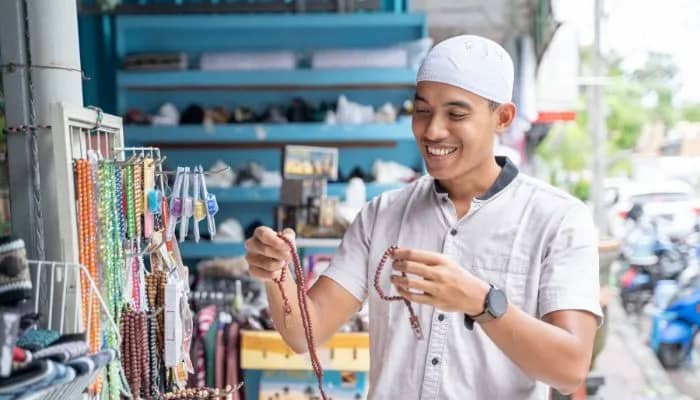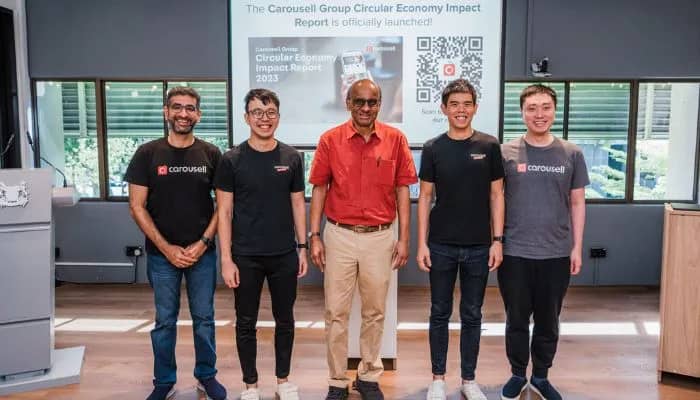Singapore – The first two weeks of Ramadan recorded up to a 47% increase in retail sales across Southeast Asia, a report from Criteo revealed.
Among the countries in the region, the report showed that Malaysia had seen the highest average increase in sales during Ramadan, with a 40% increase. Meanwhile, Indonesia and Singapore experienced a 30% and 16% increase, respectively.
During the first half of Ramadan, Malaysia and Singapore experienced their highest sales on April 2, with a 103% and 46% increase, respectively, compared to February 15 to 28. In contrast, Indonesia had a consistent rise in sales throughout Ramadan. Indonesia stood out as the only country with a notable surge of 79% on April 4, a day with extra discounts. This was followed by another peak of a 74% increase on April 14, a week before Eid.
Compared to 2022 retail sales, SEA has experienced an 8% year-on-year (YoY) increase in 2023, with each country in the region displaying unique spending patterns.
The report showed that Singapore saw the highest rise in YoY sales, with a 19% uptick across its retail transactions. Malaysia follows closely with a 17% observed increase in YoY sales, highlighting strong consumer spending power during the festive period.
On the other hand, Indonesia experienced a 5% decline in year-over-year (YoY) online sales during Ramadan, suggesting a different spending pattern in the region.
When it comes to category sales, religious and ceremonial stood out as the top-performing product category, recording a 101% increase in sales during Ramadan as compared to the average for February 15–28, 2023. Other product categories that performed well during the season also included apparel and accessories (+30%), food and beverages (+23%), and health and beauty (+16%).
Additionally, online bookings for travel also saw a 21% YoY increase during Ramadan 2023. Three days prior to Eid, the online bookings experienced an increase of up to 16% compared to the average. This increase in sales can be attributed to people attending gatherings with family and friends for celebration.
Interestingly, the report also showed that, on average, SEA consumers start browsing 14.6 days before purchasing a product during the first two weeks of Ramadan. Changes in patterns of online shopping were also observed during the month of Ramadan, especially in Indonesia and Malaysia.
The average sales during Ramadan outperformed non-Ramadan periods in every time slot, showing that people were actively shopping during Ramadan compared to the previous 15 days.
During iftar, or the breaking of fast, Indonesian and Malaysian retailers saw a decrease in sales more than regular days, with the fall recorded during the time slots of 18:00–19:00 (Indonesia) and 19:00–20:00 (Malaysia).
Meanwhile, during sehri, or the pre-dawn meal hours, Indonesia from 04:00-05:00 and Malaysia from 05:00-06:00 both saw an increase in sales.
During Ramadan, shopping was spread out more evenly during midday as people were fasting during lunchtime. However, the period from 10 a.m. to 4 p.m. remained the busiest for shopping overall. In Malaysia and Indonesia, the lunchtime hours saw the highest sales activity during the day.
Singapore saw a slight increase in average sales during the 05:00–06:00 time slot. This coincided with sehri, suggesting a potential link between Ramadan practices and this buying behavior. It is important to note, however, that this trend is not observed on days outside of Ramadan.
Looking through the data from the 2023 Ramadan, Criteo’s report is also urging brands to leverage Ramadan 2024 to boost their consumer engagement.
According to the report, marketers and retailers should opt for first-party data strategies that can readily activate data in scalable ways that benefit the consumer experience. Forward-thinking marketers and retailers will continue to fortify their data strategies to enable scalable, targeted, personalised advertising and experiences that benefit their consumers.
Marketers and retailers should also tap into a unified retail media platform. According to Criteo’s report, the majority of agencies (93%), brands (88%), and retailers (89%) stated that retail media significantly or positively affected their profits in 2023.
In fact, 79% of advertisers agreed retail media spend is more effective in terms of sales than any other channel. The data also illustrates how retail media has evolved beyond purely sponsored product ads. Overall, 85% of brands and agencies agreed that the ability of retail media to drive upper-funnel brand awareness is growing stronger, and 83% of publishers are looking to tap retail media ad spend by embedding products on their web pages, opening up more inventory opportunities for offsite campaigns.
To grow, brands, agencies, and retailers need solutions that can bring together, streamline, and simplify the handling and assessment of retail media. This helps address challenges related to budget management and measuring ROI, which are directly linked to the broader problem of fragmentation.
Marketers can also leverage SKU (stock keeping unit) data, which includes information such as product description, price, size, colour, and other relevant details that help identify and manage inventory. By analysing individual product codes, it unlocks a wealth of insights about customer preferences and behaviour at a granular level, including fine-tuning targeting, messaging, and overall campaign resonance.
Marketers can leverage this opportunity by dividing audiences according to specific product categories, customising advertisement content to match particular product preferences, and flexibly modifying bids based on the performance of individual products. This data-focused strategy results in exceptional optimisation and return on investment (ROI) for their campaigns.
Lastly, brands should build a seamless shopping experience. The digital and physical advertising spaces are merging to enhance consumer experiences. This convergence of online and offline domains will compel retailers and brands to expedite their journey towards a fully unified commerce landscape.
With the influence of ROPO (research online, purchase offline) and the necessity for improved cross-channel attribution, retailers and brands must collaborate more closely to create seamless consumer journeys that enhance engagement and foster customer loyalty.
Taranjeet Singh, managing director for enterprise for APAC at Criteo, said, “Given the varied economic landscape in SEA and heightened demand during Ramadan, it is necessary for marketers to revamp their strategies to effectively reach their audience. Last year’s Ramadan data reveals the changes in SEA consumers’ shopping habits during the holy month. Marketers need to take note of the trends to ensure that their advertising strategies are effective and engaging to their audiences at the most optimal timings.”










